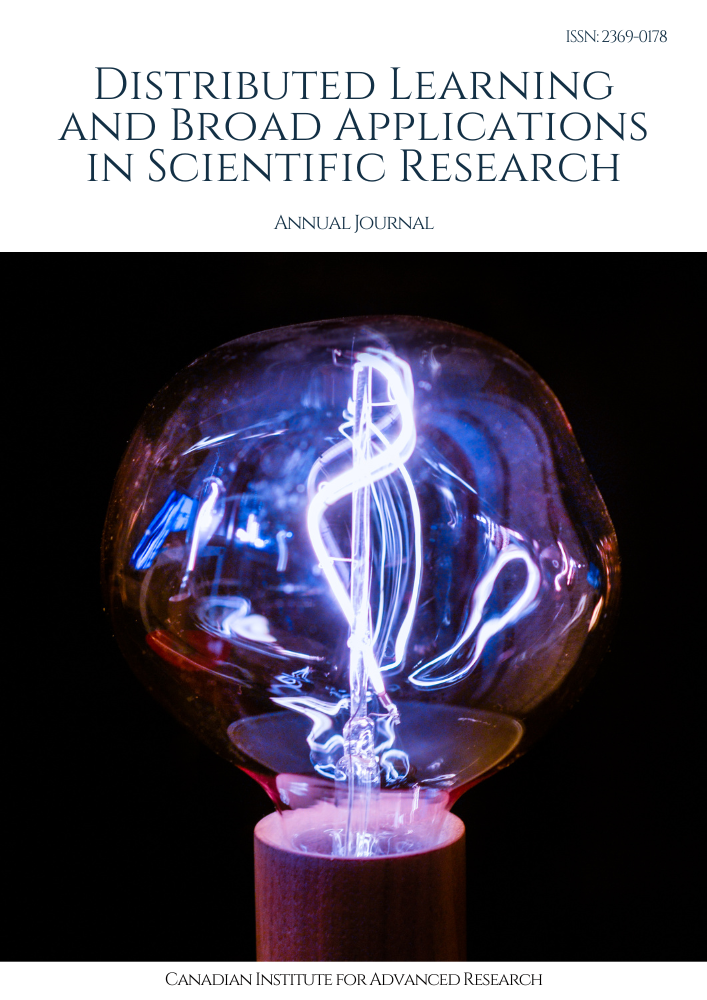Applying Natural Language Processing to Financial Sentiment Analysis
Abstract
Sentiment analysis is the process of recognizing, categorizing, and measuring sentiment expressed in texts. Within the field of finance, sentiment analysis is quickly becoming increasingly important. The finance industry has long been aware of how mood can alter the dynamics of proceedings in financial markets and the way in which investors make choices regarding trading and investment. However, the area of sentiment analysis for financial markets has expanded far beyond just investor sentiment and is currently an intrinsic part of daily business operations across a wide variety of fields and niche focuses. In the data-driven finance sector of today, accumulating numerous resources allows for the correct estimation of the sentiment of any subject.
Downloads
References
Tamanampudi, Venkata Mohit. "NLP-Powered ChatOps: Automating DevOps Collaboration Using Natural Language Processing for Real-Time Incident Resolution." Journal of Artificial Intelligence Research and Applications 1.1 (2021): 530-567.
Sangaraju, Varun Varma, and Kathleen Hargiss. "Zero trust security and multifactor authentication in fog computing environment." Available at SSRN 4472055.
S. Kumari, “Kanban and Agile for AI-Powered Product Management in Cloud-Native Platforms: Improving Workflow Efficiency Through Machine Learning-Driven Decision Support Systems”, Distrib Learn Broad Appl Sci Res, vol. 5, pp. 867–885, Aug. 2019
Pal, Dheeraj Kumar Dukhiram, et al. "Implementing TOGAF for Large-Scale Healthcare Systems Integration." Internet of Things and Edge Computing Journal 2.1 (2022): 55-102.
Zhu, Yue, and Johnathan Crowell. "Systematic Review of Advancing Machine Learning Through Cross-Domain Analysis of Unlabeled Data." Journal of Science & Technology 4.1 (2023): 136-155.
J. Singh, “The Future of Autonomous Driving: Vision-Based Systems vs. LiDAR and the Benefits of Combining Both for Fully Autonomous Vehicles ”, J. of Artificial Int. Research and App., vol. 1, no. 2, pp. 333–376, Jul. 2021
Gadhiraju, Asha. "Improving Hemodialysis Quality at DaVita: Leveraging Predictive Analytics and Real-Time Monitoring to Reduce Complications and Personalize Patient Care." Journal of AI in Healthcare and Medicine 1.1 (2021): 77-116.
Gadhiraju, Asha. "Empowering Dialysis Care: AI-Driven Decision Support Systems for Personalized Treatment Plans and Improved Patient Outcomes." Journal of Machine Learning for Healthcare Decision Support 2.1 (2022): 309-350.
Tamanampudi, Venkata Mohit. "Automating CI/CD Pipelines with Machine Learning Algorithms: Optimizing Build and Deployment Processes in DevOps Ecosystems." Distributed Learning and Broad Applications in Scientific Research 5 (2019): 810-849.
J. Singh, “Understanding Retrieval-Augmented Generation (RAG) Models in AI: A Deep Dive into the Fusion of Neural Networks and External Databases for Enhanced AI Performance”, J. of Art. Int. Research, vol. 2, no. 2, pp. 258–275, Jul. 2022
S. Kumari, “Cloud Transformation and Cybersecurity: Using AI for Securing Data Migration and Optimizing Cloud Operations in Agile Environments”, J. Sci. Tech., vol. 1, no. 1, pp. 791–808, Oct. 2020.
Sangaraju, Varun Varma, and Senthilkumar Rajagopal. "Applications of Computational Models in OCD." In Nutrition and Obsessive-Compulsive Disorder, pp. 26-35. CRC Press.
Tamanampudi, Venkata Mohit. "A Data-Driven Approach to Incident Management: Enhancing DevOps Operations with Machine Learning-Based Root Cause Analysis." Distributed Learning and Broad Applications in Scientific Research 6 (2020): 419-466.
Downloads
Published
Issue
Section
License

This work is licensed under a Creative Commons Attribution-NonCommercial-ShareAlike 4.0 International License.
License Terms
Ownership and Licensing:
Authors of research papers submitted to Distributed Learning and Broad Applications in Scientific Research retain the copyright of their work while granting the journal certain rights. Authors maintain ownership of the copyright and have granted the journal a right of first publication. Simultaneously, authors agree to license their research papers under the Creative Commons Attribution-NonCommercial-ShareAlike 4.0 International (CC BY-NC-SA 4.0) License.
License Permissions:
Under the CC BY-NC-SA 4.0 License, others are permitted to share and adapt the work, as long as proper attribution is given to the authors and acknowledgement is made of the initial publication in the journal. This license allows for the broad dissemination and utilization of research papers.
Additional Distribution Arrangements:
Authors are free to enter into separate contractual arrangements for the non-exclusive distribution of the journal's published version of the work. This may include posting the work to institutional repositories, publishing it in journals or books, or other forms of dissemination. In such cases, authors are requested to acknowledge the initial publication of the work in this journal.
Online Posting:
Authors are encouraged to share their work online, including in institutional repositories, disciplinary repositories, or on their personal websites. This permission applies both prior to and during the submission process to the journal. Online sharing enhances the visibility and accessibility of the research papers.
Responsibility and Liability:
Authors are responsible for ensuring that their research papers do not infringe upon the copyright, privacy, or other rights of any third party. Scientific Research Canada disclaims any liability or responsibility for any copyright infringement or violation of third-party rights in the research papers.
If you have any questions or concerns regarding these license terms, please contact us at editor@dlabi.org.



